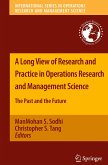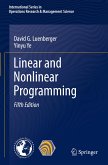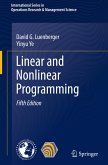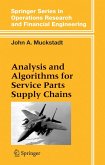From the Foreword by Marshall Fisher, The Wharton School, University of Pennsylvania:As generation of academics and practitioners follows generation, it is worthwhile tocompile long views of the research and practice in the past to shed light on researchand practice going forward. This collection of peer-reviewed articles is intended toprovide such a long view.This book contains a collection of chapters written by leading scholars/practitionerswho have continued their efforts in developing and/or implementing innovativeOR/MS tools for solving real world problems. In this book, the contributors sharetheir perspectives about the past, present and future of OR/MS theoretical development, solution tools, modeling approaches, and applications. Specifically, this book collects chapters that offer insights about the following topics:- Survey articles taking a long view over the past two or more decades to arriveat the present state of the art while outlining ideas for future research. Surveysfocus on use of a particular OR/MS approach, e.g., mathematical programming(LP, MILP, etc.) and solution methods for particular family of application, e.g.,distribution system design, distribution planning system, health care.- Autobiographical or biographical accounts of how particular inventions (e.g.,Structured Modeling) were made. These could include personal experiences inearly development of OR/MS and an overview of what has happened since.- Development of OR/MS mathematical tools (e.g., stochastic programming, optimizationtheory).- Development of OR/MS in a particular industry sector such as global supplychain management.- Modeling systems for OR/MS and their development over time as well as speculationon future development (e.g., LINDO, LINGO, and What'sBest!)- New applications of OR/MS models (e.g., happiness)The target audience of this book is young researchers, graduate/advanced undergraduatestudents from OR/MS and related fields likecomputer science, engineering,and management as well as practitioners who want to understand how OR/MSmodeling came about over the past few decades and what research topics or modelingapproaches they could pursue in research or application.
Bitte wählen Sie Ihr Anliegen aus.
Rechnungen
Retourenschein anfordern
Bestellstatus
Storno









